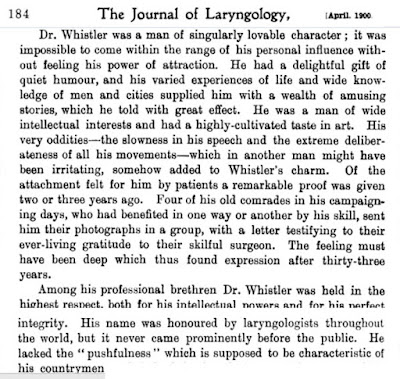Anna Matilda McNeill Whistler (1804-1881)
George Washington Whistler (1800-1849)
Anna returned to the United States with her two surviving sons. In 1853 she was living in Scarsdale, New York. Born in North Carolina, she had sons attending New York schools. James was an ill-suited cadet at West Point, following in his father's career path; William was considering a medical career at Columbia. Anna was pious enough to wish they'd become clergymen but she seemed happy with their eventual career choices.
She wrote about quilting for charity with the Scarsdale quilting circle there in the early 1850s, meeting in the parlors at Jane O'Neil Hill Popham's home.
Scarsdale Public Library Collection
Jane O'Neil Hill Popham (1784-1882) with granddaughters
at her home The Locusts, still standing.
The Pophams' parlors in the 1930s
By 1856 son Jemie who'd been dismissed from West Point decided to study art in Paris. Willie was studying in Philadelphia and Anna moved there to be with her well-loved youngest.
Philadelphia's Arch Street where Anna spent the late 1850s.
Willie graduated from the Pennsylvania Medical School in 1860 and married second cousin Florida "Ida" Bayard King (1840-1863) born in Georgia. Mother Anna then traveled to Europe to visit James and stepchildren Deborah Whistler Haden and George Whistler. Both James and Deborah's husband Francis Seymour Haden were artists experimenting with printmaking forms, particularly etchings.
Deborah Delano Whistler Haden (1825-1908),
Anna's stepdaughter with whom she maintained
family relations despite son James's hatred of his half-sister's husband.
When the Civil War commenced in 1861 Anna and her sons' allegiance followed her Carolina heritage and that of Ida's. William and Ida went to Richmond, Virginia where he found a post in the Confederate medical troops becoming an Assistant Surgeon.
"Ida has made Willie a thorough secessionist," wrote Anna when she visited. In her early 20s Ida fell victim to smallpox and died in March, 1863 despite her mother-in-law's care. Anna found herself alone in Richmond behind the blockade. Willie was serving in the field and her other children were in Europe.
William McNeill Whistler (1836-1900)
Determined to get to England Anna booked passage on the Confederate
blockade runner Advance, which sailed from the Cape Fear River to the
West Indies and then to England nearly 20 times before being
captured by the Union. Anna arrived in 1863.
A few months before the Civil War ended an exhausted Dr. William Whistler scheduled a voyage to England, anxious to see his family. Traveling from Charleston up to Wilmington and then to New York before he could find passage William carried dispatches from the Confederacy to contacts in England, but delivered them only weeks before Appomattox.

Flamboyant artist James Abbott McNeill Whistler (1834- 1903)
by William Merrit Chase
Doting mother Anna always indulged both sons. One might guess she'd spoiled James who was the art world's pugnacious, self-centered Prima Donna in his time but James seems to have had such a difficult personality we can only classify him today as some kind of sociopath (a narcissist who could really paint.) He needed to be the center of attention and saw any interference as betrayal, picking huge fights with art critics and fellow artists such as sister Deborah's husband. With someone as self-absorbed as James the family could only stand back and hope for periods of peace.
Anna Whistler in her life-long mourning
with a required widow's cap. The variety
in this type of necessary head gear is
fascinating.
The Whistlers, James, William, Deborah and Anna remained in England, seeing no home in America after Confederate defeat.
William practiced medicine in England and remarried a Greek heiress.
Helen "Nellie" Euphrosyne Ionides (1849-1917)Many Confederates sought European refuge with plans to continue the war or turn a profit on what they'd learned and earned during it. The Whistler brothers were hired by torpedo specialist Henry Doty, to sell arms to South American countries warring against Spain. Willie's request for a passport was rejected but James sailed for Chile and Peru as a sort of secret agent. After failing in their arms deals the South American plot was over with James (not suitable for any secret work) getting into fist fights with several people including Doty. James returned to his art work and William spent his post-war years as a noted laryngologist.
William's Obituary in 1900
Anna must have often wondered how her parenting had resulted in two
such different sons.
In 1872 James painted his mother, wearing a
widow's cap in his characteristic monochrome palette.
The portrait, rather controversial at first due to color & composition
(note the cropped picture frame at right),
became an American icon in the pantheon of mother worship.
Read Anna's letters in the Atlantic Monthly, Volume 136.
She also left a diary of their exciting years in Russia.













.jpg)

2 comments:
James McNeill Whistler was born in Lowell, MA. The house where he was born is now home to the Whistler House Museum of Art and is just a short walk from the New England Quilt Museum.
I love these glimpses into history. And wow - yes, two very different sons.
Post a Comment